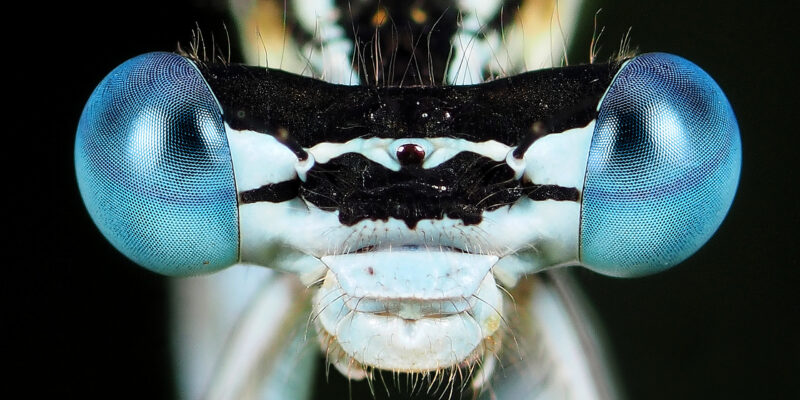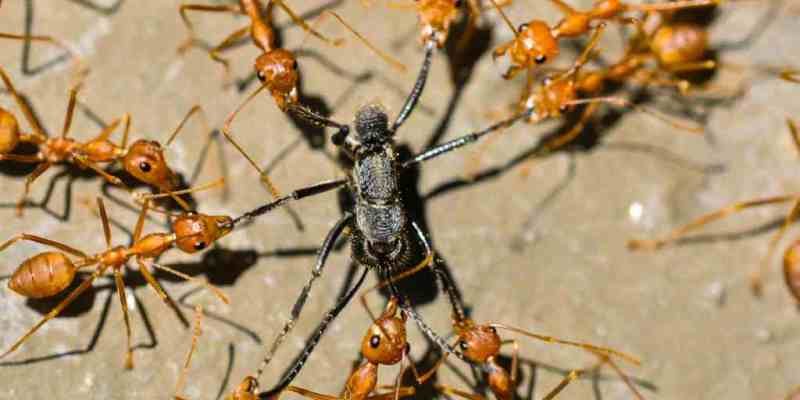Congratulations to the winners of the 2021-2023 Royal Entomological Society Journal Awards.
Insect Conservation and Diversity is a Royal Entomological Society journal that uniquely combines insect diversity and conservation, focusing on invertebrate preservation. Emphasizing wild arthropods and their specific relationships, this journal covers topics like biogeography, climate change impacts, conservation genetics, and global biodiversity.
ICAD welcomes submissions on past and present biodiversity distribution, monitoring arthropod populations, identifying harmful influences, and restoring ecosystem services. With a broad scope, we encourage submissions across insect and arthropod conservation, encompassing ecological theory and practical management.

Winner Volume 15, 2022:
Janderson Batista Rodrigues Alencar Windthrows promote higher diversity of saproxylic beetles (Coleoptera: Passalidae) in a Central Amazon forest

Windthrows, which are natural events where trees are snapped or uprooted by storms, significantly impact forest ecosystems. This study investigated how windthrows in the Central Amazon affect beetles that rely on decaying wood (saproxylic beetles).
The judges were impressed with the ecological insights into factors promoting insect diversity in tropical rainforests in this MSc research project.
They said:
“The study has a very nice experimental design, sampling saproxylic insects in storm-damaged forests 12 years after a disturbance event, with impressive sample sizes generated under challenging field conditions, exceptional taxonomic resolution, robust statistical analyses, and a well-written and thoughtful discussion about the factors that promote and maintain species diversity.
The work also considers the broader implications of environmental change for insect conservation. With increasing risk of these types of extreme storm disturbance events occurring, it is important to build greater ecological understanding of how such impacts affect insect communities.”
Janderson holds a PhD in Entomology from the Instituto Nacional de Pesquisas da Amazônia (INPA). His research focuses on understanding the structure and dynamics of ecological communities, with a particular interest in the evolutionary and ecological outcomes for Amazonian insects, such as saproxylic and hygropetric beetles, as well as arboreal ants. He investigates how factors like forest fragmentation, climate change, and windthrows influence biodiversity. He combines extensive fieldwork with ecological modelling to examine species adaptation and distribution.
Currently, he leads projects on arboreal insects and biodiversity in white-sand ecosystems, developing conservation strategies to address environmental changes in the Amazon. His work integrates basic and applied science, aiming to preserve tropical ecosystems and contribute to a global understanding of biodiversity. He says, “I am driven by curiosity and a passion for exploring the unknown.”

By comparing windthrown areas to untouched old-growth forests, researchers discovered that these disturbances enhance beetle diversity, with more species and individuals thriving in impacted zones. The increased availability of deadwood in windthrow areas provides vital resources, reduces competition, and creates habitats for various beetle species. Interestingly, while the severity of the windthrows, measured by tree mortality, did not directly increase diversity, it influenced the composition of species.
Janderson stated,
“These results underline the critical role of natural disturbances such as windthrows in sustaining biodiversity within tropical forests. With climate change expected to amplify the frequency of extreme weather events, understanding how these processes shape ecosystems become increasingly vital.”

Winner Volume 16, 2023:
Lindsey Kemmerling Butterfly biodiversity increases with prairie strips and conservation management in row crop agriculture
Biodiversity is declining globally, and butterflies are declining at an average rate of 3% per species per year. A leading cause of this decline is large-scale row-crop agriculture. Thus, there is an urgent need to transform agricultural landscapes into multifunctional systems that meet human needs while mitigating biodiversity loss.
The judges were impressed with the very nice experimental study, and strong applied conservation angle demonstrating the importance of planting floral strips to improve biodiversity in agricultural landscapes. They noted,

“The study is well written with strong statistical analysis, and provides clear support for the multifunctional benefits of flowering ‘prairie strips’ in agricultural landscapes to promote insect species diversity and the conservation of threatened species. The work also demonstrates a really nice example of the value of long term ecological research sites, especially their role in providing new experimental contexts for future research.”
Lindsey is currently a postdoctoral researcher at the University of Minnesota in Emilie Snell-Rood’s lab. Her research interests are at the intersection of biodiversity conservation, ecological restoration, and social justice; she is interested in research that has application to support biodiversity and advance social equity.
Her published work has focused on restoration within agricultural landscapes and the trade-offs and synergies this creates for biodiversity and ecosystem services. This work has implications for the conversion of up to 25% of monoculture farmland in the United States to restored prairie. Her current work investigates urban pollutants (heavy metals and microplastics), their bioaccumulation in insects, and remediation of polluted locations.
She is interested in how we can restore land to both support biodiversity conservation and mitigate impacts of pollution on people. This is community-engaged research, including co-developing research questions with community partners, which has been crucial for her interests to conduct sound, actionable science.


When speaking about the research that led to the award, she said,
“We tested how restoring habitat in row-crop agriculture using ‘prairie strips’, in conjunction with other conservation management practices, can mitigate the loss of butterfly biodiversity. We implemented prairie strips in an experiment spanning a gradient from conventionally managed crops to conservation land and surveyed butterflies for three years.
Butterfly abundance and richness increased as land use intensity decreased. Prairie strips harbored unique butterfly communities and had a higher abundance than other management strategies, including conservation land. Prairie strips, while covering only 5% of the experimental plots, increased butterfly abundance and supported unique butterfly species at the whole plot scale.”

Highly commended Early Career Entomologist awards:
Ellen Welti Temperature drives variation in flying insect biomass across a German malaise trap network
Mahtab Yazdanian Ecological and life-history traits predict temporal trends in biomass of boreal moths





